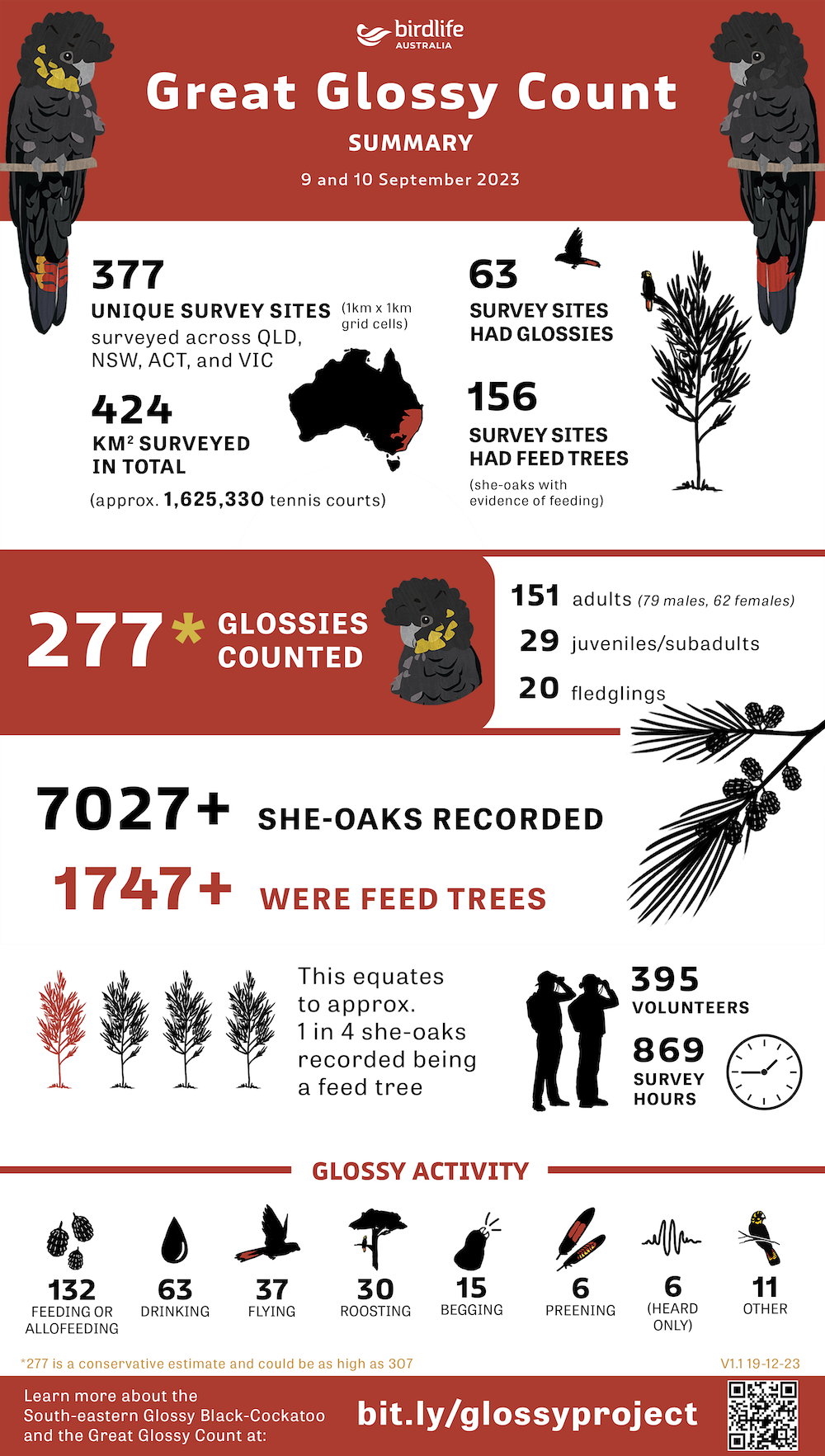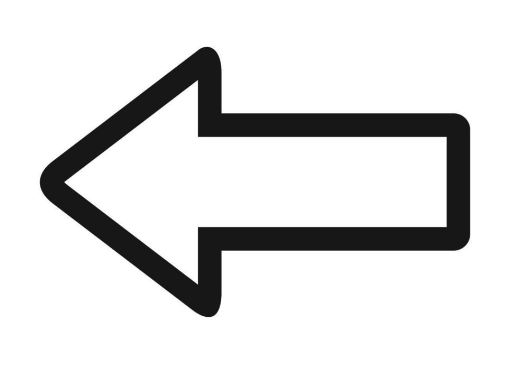
BirdLife Australia supports the recovery of South-eastern Glossy Black-Cockatoos (Calyptorhynchus lathami lathami, a.k.a. “Glossies”) and their habitat through three projects:
- Glossy Project – East Gippsland (Victoria),
- Glossy Project – Coffs Coast (New South Wales), and
- the Great Glossy Count (covers the distribution of the South-eastern Glossy Black-Cockatoo in Queensland, NSW, the ACT and Victoria).
Click on a project's name (in blue) to learn more about it.
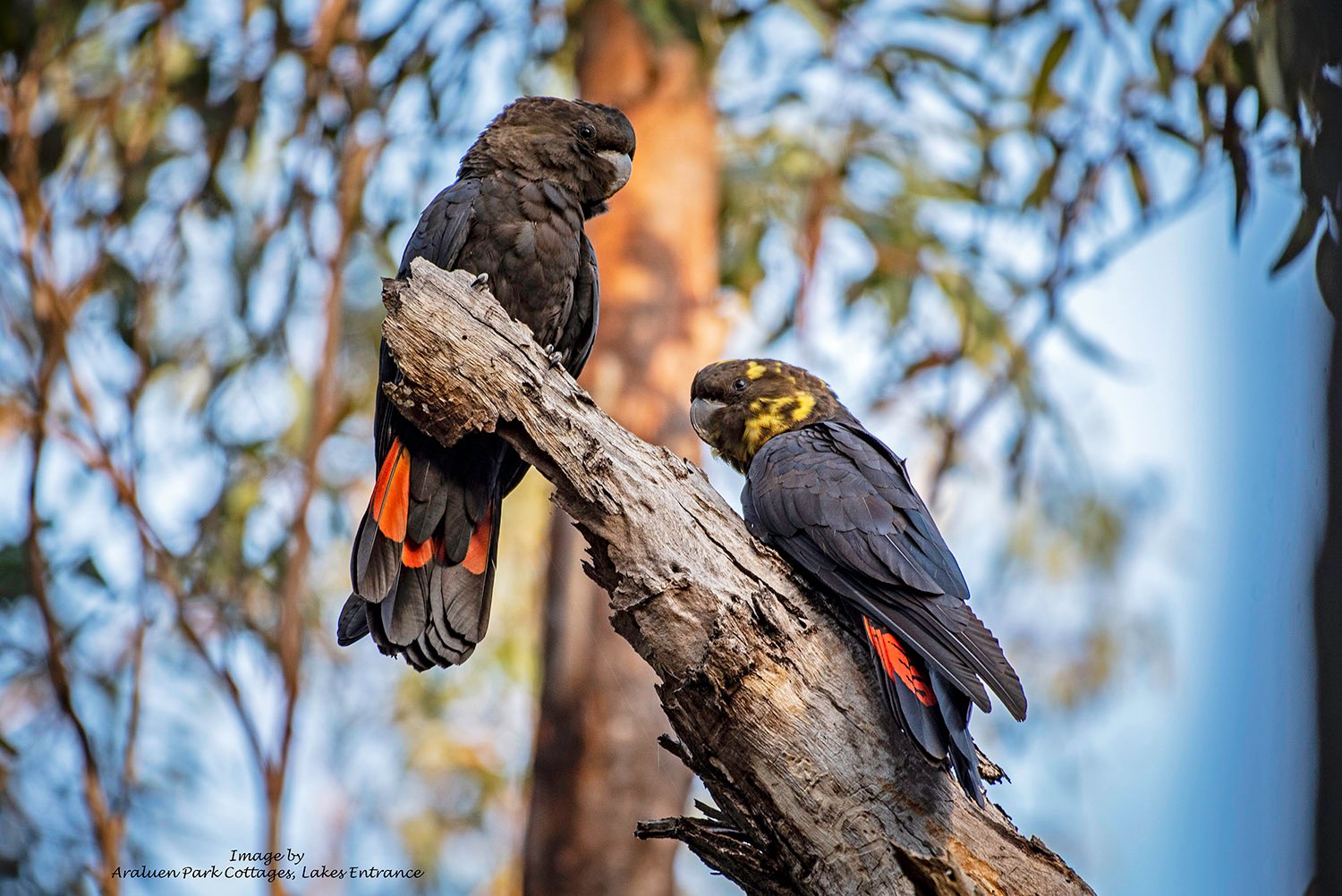
Training materials and resources
'How to' documents and data collection sheets
Great Glossy Count
- How to register and book a site in Birdata
- Web guide: bit.ly/howtobooksitebirdata
- Video guide: Watch here
- How to participate in a Glossy Count
- Web guide: bit.ly/howtoglossycount
- Glossy Count Risk Assessment document
- 2023 Glossy ID workshop webinar recording
- Glossy Count data collection sheets
Recording data in Birdata
- How to record Glossy Black-Cockatoo data in Birdata:
- using the web portal
- Web guide: bit.ly/recordGBCweb
- using the mobile app
- Web guide: bit.ly/recordGBCapp
- Video guide: Watch here
- using the web portal
Glossy and she-oak identification
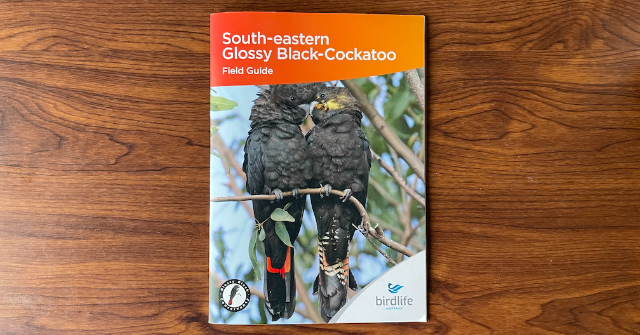
South-eastern Glossy Black-Cockatoo Field Guide
A downloadable 28-page booklet with everything you need to know about Glossies and the she-oaks they feed on.
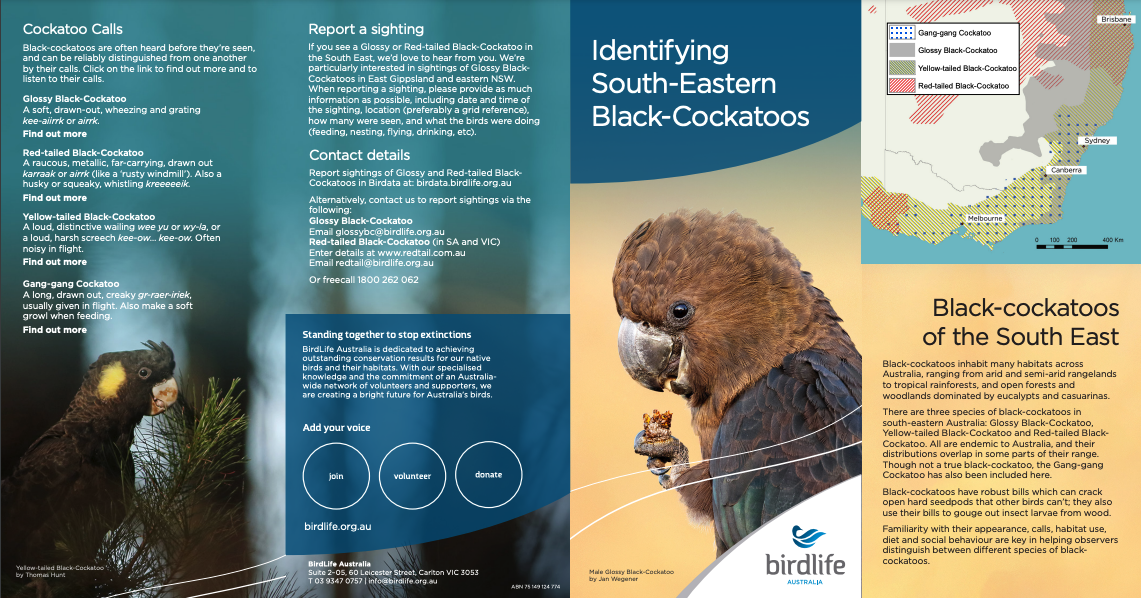
Identifying south-eastern black-cockatoos
A downloadable two-sided pamphlet on how to identify the black-cockatoo species found in south-eastern Australia.
How to identify Glossies and the she-oaks they have fed on
Join Dr Daniella Teixeira in the video above to learn how to tell Glossies apart from other black-cockatoos and identify where they have fed.
A Glossy Black-Cockatoo lunchtime – Saving our Species: Field Notes
Join Dr Brian Hawkins and Mike Barth on the NSW Mid North Coast, as they show you how to pick up on the key signs that Glossies are in the area. Video: Alex Pike, NSW Department of Planning and Environment.
Interested in BirdLife's Glossy projects?
Thank you for subscribing!
Have a great day!
BirdLife Australia acknowledges the Traditional Owners of the Country on which we live and work, and we pay our respects to their Elders past and present. We recognise and are grateful for the immense contribution of Indigenous people to the knowledge and conservation of Australia’s birds.
